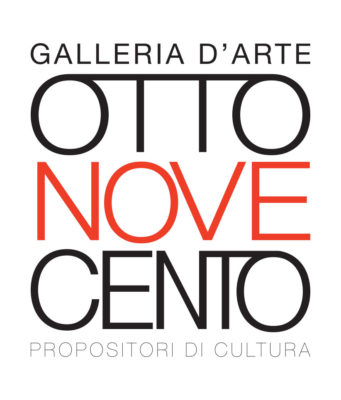Una profonda conoscenza della materia e della figura è quella che guida la creazione artistica di Giorgio Conta. Scultore di legno per nascita (Cles, 1978), si forma presso la scuola di scultura di Ortisei e appassionandosi anche a disegno e pittura, persegue una personale ricerca sulla figura umana e sul suo divenire.
Protagoniste delle sue opere sono infatti raffinati corpi in corso d’opera, non finiti classicheggianti, assemblaggi di frammenti di diversa natura a raggiungimento di un’ideale totalità. Conta inizia accostando diverse essenze e tagli lignei e con versatile abilità nell’impiego di vari strumenti, quali scalpelli o persino motoseghe, ne porta alla luce l’anima.
Ne risulta, dunque, che è tanto la modellazione dell’artista quanto la risposta dello specifico materiale a definire la forma dell’opera, come avviene in questa enigmatica fanciulla, accompagnata dal piccolo fedele. Qui l’eterogeneità della materia e il suo trattamento veicolano un vero e proprio contrasto concettuale e temporale, permettendo all’impeccabile classicità di legarsi e slegarsi indissolubilmente ad e da un presente estremamente contemporaneo: la tipica conformazione di una vestale romana dal volto e taglio insolitamente attuale, deve dissolversi, fisicamente, per accarezzare il presente; è infatti solo una mano, fattasi viva, a toccare teneramente un buffo e impensabile Yorkshire dei nostri giorni.
A deep knowledge of the material and the figure is what guides Giorgio Conta’s artistic creation. A wood sculptor by birth (Cles, 1978), he trained at the sculpture school in Ortisei and, also passionate about drawing and painting, he pursues a personal research on the human figure and its becoming.
The protagonists of his works are in fact refined bodies in progress, classical unfinished pieces, assemblages of fragments of different natures to achieve an ideal totality. Conta starts by juxtaposing different woods and wood cuts and with versatile skill in the use of various tools, such as chisels or even chainsaws, he brings their souls to light.
The result is therefore that it is as much the artist’s modelling as the response of the specific material that defines the form of the work, as is the case in this enigmatic maiden, accompanied by the little faithful. Here, the heterogeneity of the material and its treatment convey a conceptual and temporal contrast, allowing the impeccable classicism to be inextricably linked to and untied from an extremely contemporary present: the typical conformation of a Roman vestal with an unusually contemporary face and cut must dissolve, physically, to caress the present. it is in fact only a hand, become alive, that tenderly touches a funny and unimaginable modern-day Yorkshire.

